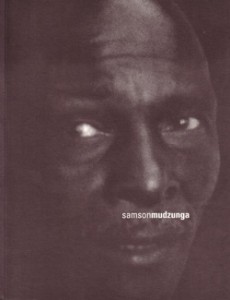Mudzunga was born in 1938 in Shanzha, Dopeni, in the Nzhelele district of the former Venda “homeland”. Although Mudzunga began playing with clay as a child, it wasn’t until much later in life that he became a self-sustaining artist, acclaimed for his performance events and for his extraordinary wood carvings, particularly his enormous “coffin drums”. Based primarily in the Northern Province, Mudzunga uses Johannesburg as his urban base. He has exhibited on Africus (the first Johannesburg Biennale), and at several galleries in South Africa. A number of his drum pieces are in private and gallery collections.
The book consists of 84 pages with black and white images and a soft cover. The texts in this book were written by Kathy Coates and Stephen Hobbs and have been translated into French and Dutch. Black and white photographs by Kathy Coates, Hannelie Coetzee, Maud Félix- Faure, Stephen Hobbs, Shaka Jamal Redmond and Rodney Place.
Philippa Hobbs is the author for the educational supplement published with TAXI-002 Samson Mudzunga.
EXTRACT FROM THE BOOK
From the Stephen Hobbs text:
…South Africa today finds itself redressing major differences in language, cultural beliefs and practices, which under apartheid were forced into separate development. As such, gallerists and curators often find themselves having to be highly self-conscious and aware of how easily “Western” ideological frameworks can contribute to the misinterpretation of crossover production. From an urban perspective, Mudzunga is able to seduce his audience by treating them as active participants in the construction of meaning. But the cultural and linguistic differences between Venda and Johannesburg situate a divide – one which I think it is safe to assume exists as much for the artist as it does for his audience. For me the desire to engage those differences is compelling, because Mudzunga as an artist and personality is somehow able to traverse, however briefly, these divergences in language, context, and culture. […
From the Kathy Coates text:
…It’s apparent from these comments that Mudzunga’s performative work risks dilution through distance, as well as the misinterpretation that potentially results from its presentation in different contextual frameworks. As Mackenny’s comments suggest, his work might indeed be falling into the gap between origin and reception: much as the fascination and importance of this work lies in its straddling of cultural worlds and artistic discourses, the audience which Mudzunga has so carefully cultivated might not be as flexible as the artist himself. For those seeking the “cathartic response” of “authentic ritual” (and here we are in the territory of the romanticising impulse) his performances are bound to disappoint. While Mudzunga might deploy and exploit those discursive modes, he is, in the end, the ultimate devil’s advocate: interrogating and using both urban and rural systems, he moves within and between both with subversive intent.
Given the contradictory impulses of Mudzunga’s modus operandi, it’s not surprising that conflict should emerge as a key dramatic theme in his performances. What makes him a powerful and thought-provoking cultural producer has less to do with the “authenticity” of a particular identity than with his performance of a range of identities: as traditionalist, enlightened rural dissenter, street-savvy urban networker, and so on. Like all canny contemporary artists, Mudzunga strives to link product to performance, insofar as sales of the former financially facilitate the conceptual impetus of the latter. Unlike most contemporary artists, his balancing act occurs at the threshold of two entirely different geopolitical arenas, both of which function as stages for an always shifting conceptual theatre. Both of these spheres are marked by the history of apartheid; both offer unique opportunities for considering the evolving dynamics of that history. Where Mudzunga inserts himself as a magnetic field for all kinds of social energies, we are given the opportunity to learn something of history’s complex lessons. […
DETAILS OF BOOK
Authors:
Kathy Coates was born in Leeds, England, in 1950 and emigrated to South Africa in 1981. She received her Fine Art Degree from Michaelis School of Fine Art in Cape Town and in 1991 took up a post as art lecturer at Giyani College of Education, now the University of Venda. Her focus is on making connections with locally-based artists, and integrating their work into university course curricula. Coates is currently completing a Master’s Degree through Natal Technikon – her research is based on the work of five of the Northern Province woodcarvers, including Samson Mudzunga.
Stephen Hobbs obtained his B.A. (Hons) in Fine Art from the University of the Witwatersrand in 1993. From 1994 to 2000 he curated the Market Theatre Galleries in Johannesburg. Since 1995 he has held a part time position at the South African School of Film, Television and Dramatic Art, teaching courses in Aesthetics and Art History. He is currently co-director (with Marcus Neustetter and Kathryn Smith) of the Trinity Session and South Foundation, an arts consultancy specialising in project initiation and production, curating, research, and critical writing. As an artist and curator Hobbs focuses most of his attention on urban interpretation and development.
Editor: Brenda Atkinson
Design: Roelof van Wyk
Production: Anina Kruger
Printing: Bowens Bureau
Paper: Reviva 105 & 215gsm
Typeface: Univers
Publisher: David Krut Publishing
French Translator: Catherine Lauga du Plessis
Dutch Translator: Loes Nas © The authors, the artist, and David Krut Publishing, 2001
ISBN 0 620 27078 0
ENQUIRIES
TAXI-002: Samson Mudzunga, available through David Krut Publishing

